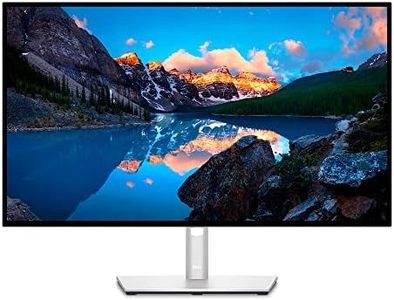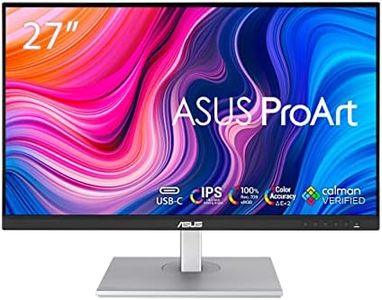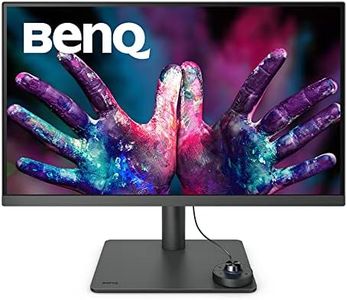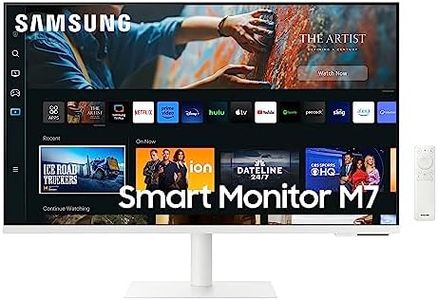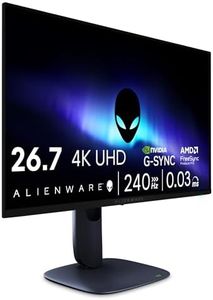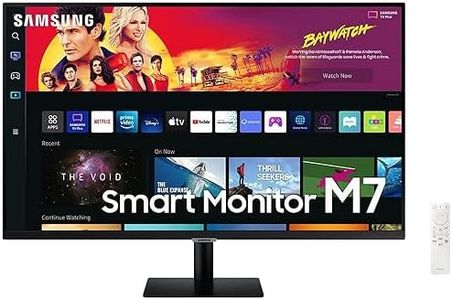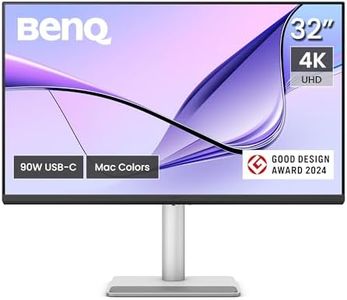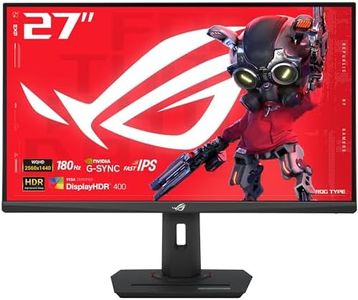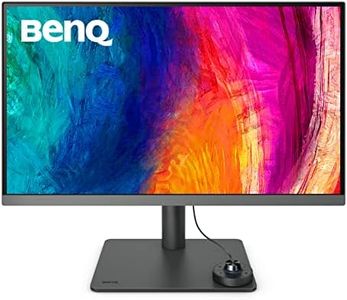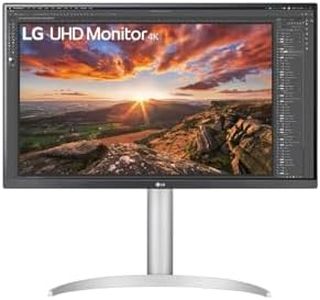We Use CookiesWe use cookies to enhance the security, performance,
functionality and for analytical and promotional activities. By continuing to browse this site you
are agreeing to our privacy policy
10 Best Retina Display Monitor
From leading brands and best sellers available on the web.Buying Guide for the Best Retina Display Monitor
When looking to buy a retina display monitor, you want to prioritize features that will deliver crisp, vibrant visuals and a comfortable viewing experience. Think about how you plan to use your monitor—whether for content creation, office work, media consumption, or gaming—as this will shape which specs matter most. Understanding key specs can help you narrow your choices and find the monitor that best fits your daily needs.ResolutionResolution refers to the number of pixels on the screen, usually noted as width x height (for example, 2560x1440). Higher resolution means more detail and clearer images, which is crucial for a retina-like experience where individual pixels are not visible at a typical viewing distance. Common categories are Full HD (1920x1080), Quad HD (2560x1440), and 4K (3840x2160). For most users, 4K is ideal for sharpness, especially on larger screens or for graphic design and photo editing. If you primarily do basic tasks or have a smaller monitor, Quad HD may be sufficient. Consider how close you’ll sit to the screen and what you’ll use it for to guide your choice.
Panel TypePanel type determines the quality of colors and viewing angles on your monitor. The main types are IPS, VA, and TN. IPS panels are favored for retina displays due to their excellent color accuracy and wide viewing angles, making them suitable for creative work and immersive viewing. VA panels offer deeper contrast but can sometimes have slower response times, while TN panels are fast but usually have weaker colors and angles. If color fidelity and clarity are important for your tasks, IPS is generally the best bet.
Refresh RateRefresh rate indicates how many times per second the screen updates its image, given in hertz (Hz). Standard monitors have 60 Hz, and higher-end ones offer 120 Hz or more. For everyday work, 60 Hz is usually enough, but if you game or want extra smoothness in motion, a higher refresh rate can enhance the experience. Choose based on what you’ll be doing most often on your monitor.
Color Accuracy and GamutColor accuracy tells you how true the monitor represents colors, while color gamut shows how many colors it can display. Monitors with higher color accuracy and wider color gamuts are better for tasks like photo and video editing, where it’s important that what you see on screen matches reality. Look for monitors with certifications for coverage of color spaces like sRGB, AdobeRGB, or DCI-P3 if you work with visual media. If you mainly browse the web or watch videos, this spec is less critical.
BrightnessBrightness measures how well the monitor can display clear images in various lighting conditions, typically in units called nits. A brighter display (300 nits or more) is beneficial if your workspace gets a lot of sunlight or bright light, reducing glare and keeping visuals vivid. For dimmer rooms, lower brightness may suffice and can be easier on your eyes. Think about your room’s lighting to decide what level is right for you.
Pixel DensityPixel density, usually given in pixels per inch (PPI), tells you how tightly packed the pixels are. Higher pixel density means sharper images and less likelihood you'll see individual pixels, which is the goal of a 'retina' monitor. A pixel density above 200 PPI is generally considered retina quality for desktop use. If you want exceptionally crisp text and images, pay attention to this number, especially if you tend to sit close to the screen.
Screen SizeThe physical size of your monitor, measured diagonally in inches, will impact your comfort and desk space. Larger screens let you see more content at once and may benefit multitasking or creative work, but also require higher resolutions for sharp images. Consider your workspace and how much you’ll benefit from a bigger screen versus potential eye fatigue from moving your gaze long distances.



